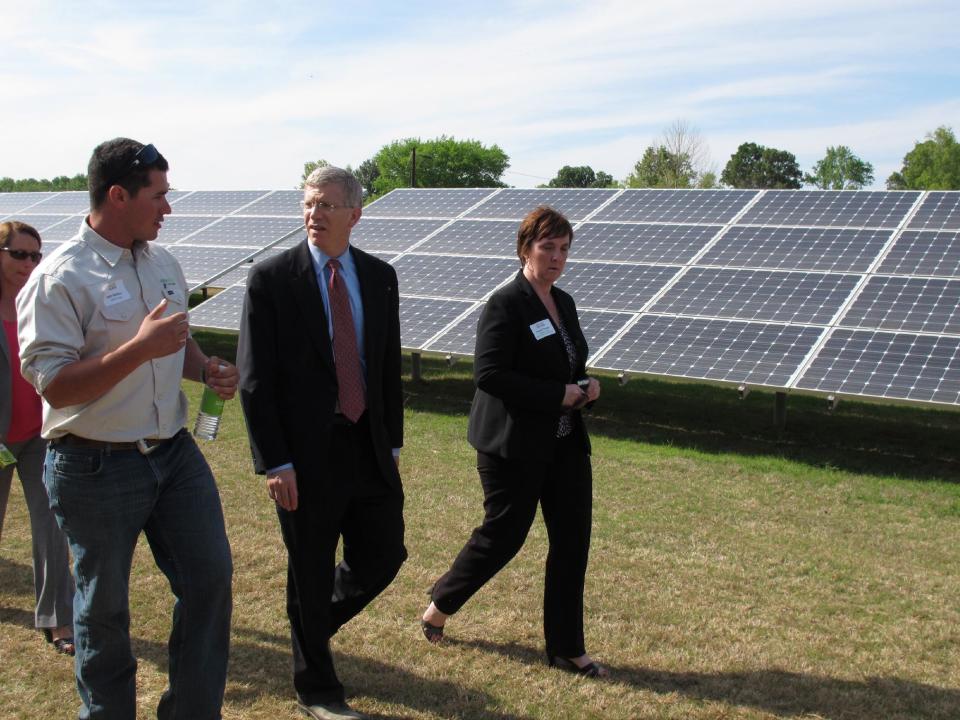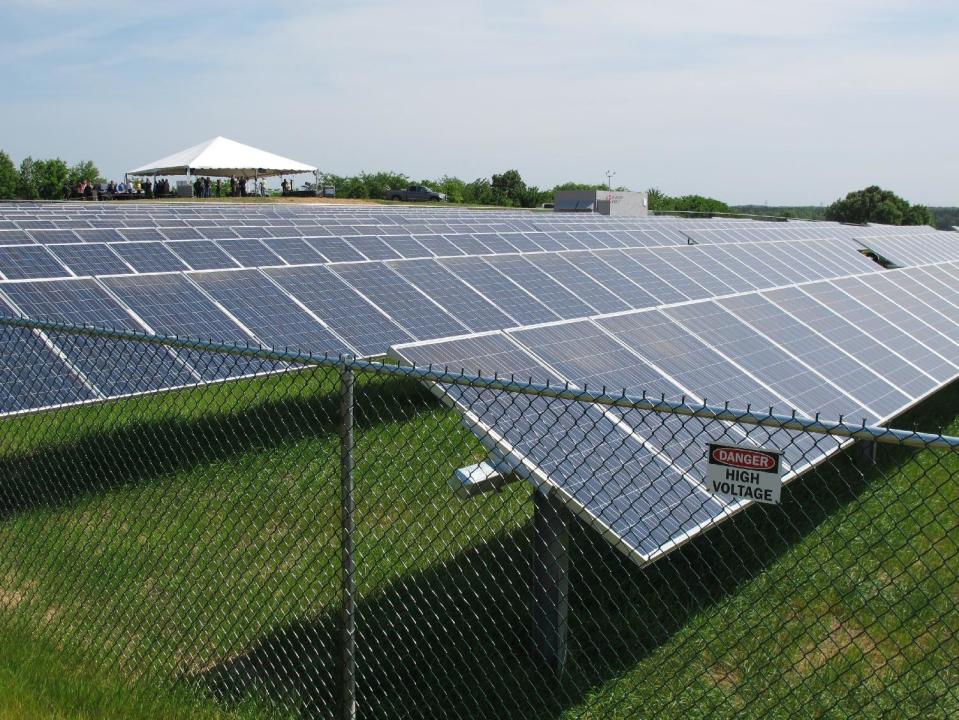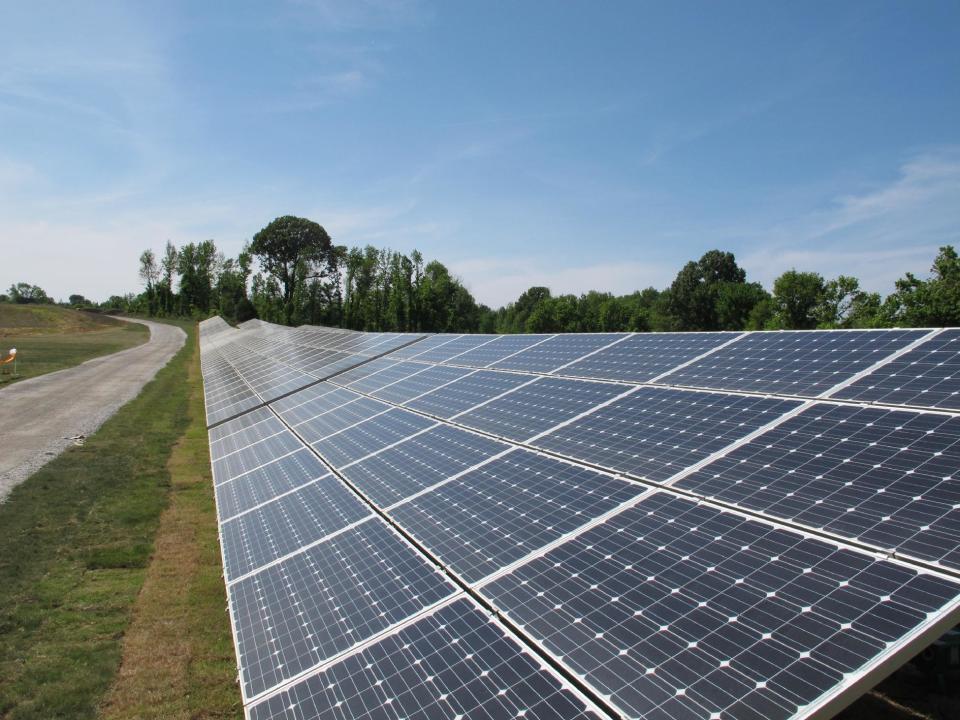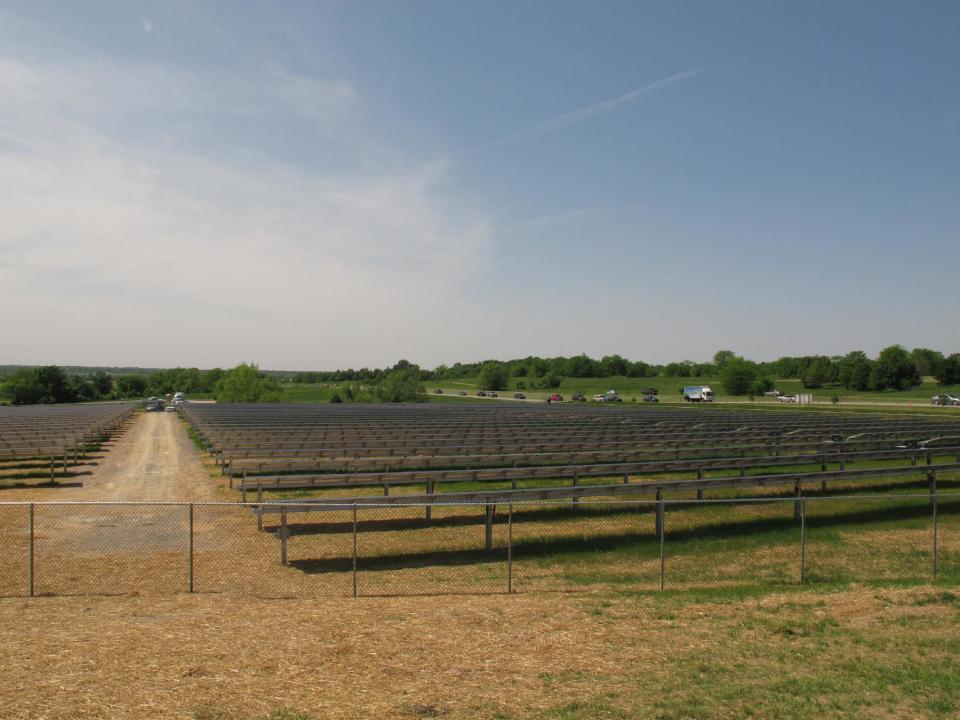New solar farms in West Tenn. signal growth
STANTON, Tenn. (AP) — Two new solar energy farms are generating a small but growing supply of electricity in West Tennessee, the latest signs of progress in an industry that proponents say is primed to add jobs and bolster rural and urban power supply.
Hundreds gathered Wednesday in Memphis for a solar energy symposium and the dedication of a 1 megawatt solar farm. Industry leaders also met Thursday in Stanton to formally open Tennessee's largest solar generating facility. It uses its more than 21,000 panels to harness the sun's energy and produce 5 megawatts of power.
Politicians came from Washington to tour the facilities, which supply energy purchased by the Tennessee Valley Authority. About 6,500 Tennesseans are employed in the state's solar energy industry, a huge jump from just a few years ago.
"Tennessee is a leader," said Daniel Poneman, deputy secretary of the Department of Energy, during a tour of the West Tennessee Solar Farm in Stanton. "This puts you right on the front edge. It creates great jobs for the people here, and it is building the future for the community and it cleans the environment."
Solar power proponents say the clean, renewable energy could help ease pressure on the nation's stressed electricity infrastructure. Skeptics say solar energy is expensive to produce and has the potential to fulfill just a tiny fraction of the world's energy needs.
At the Solar Solutions Conference, experts said Tennessee's growing solar industry includes 180 companies that build solar farms and are making solar energy components for use in solar energy facilities worldwide.
But these same experts also see significant obstacles to growth: sluggish demand, high costs, a lack of a clear solar energy policy, the ongoing effects of the Solyndra bankruptcy and a proposed state law that could raise taxes on properties with solar farms.
Statistics gathered by the federal government, the Tennessee Solar Institute and other groups show that the solar energy industry is growing in the state. For example, Tennessee moved to 15th place in solar energy production in 2011, up five spots from the prior year.
A report by the institute shows that Tennessee had less than 0.1 megawatts of solar voltage installed in 2008. That increased to 27 megawatts in 2011, and the institute predicts an increase of 10 to 15 percent in 2012.
By way of comparison, the TVA's nuclear plant at Browns Ferry has a summer net capability of 3,300 megawatts.
Small business entrepreneurs have helped build the solar energy industry. Of the 180 companies based in Tennessee that deal in solar energy products, 78 percent employ fewer than 100 workers.
The state does have larger solar energy companies, including Sharp Electronics and Silicon Ranch, which teamed up to build the new 1 megawatt solar farm at the Agricenter in Memphis.
Two other companies that make polysilicon, a material used to make solar cells and semiconductor devices, are building plants in Tennessee. Hemlock Semiconductor Corp. is building a plant in Clarksville and Wacker Chemie AG is building one near Cleveland.
Sharp, which has a facility in Memphis, made 4,160 solar panels for the $4.3 million array built without taxpayer funding. Silicon Ranch, based in Nashville and owned by former Gov. Phil Bredesen, paid for construction and owns the solar array, which will provide enough electricity to run more than 100 homes per year.
The solar farm in Stanton, about 45 miles northeast of Memphis, began operating in January. It is designed to generate enough electricity to power 500 homes for a year. Signal Energy used more than 200 workers to build the $30 million facility, which is owned and operated by the University of Tennessee and visible from Interstate 40.
Chickasaw Electric Co-op improved nine miles of power lines so that electricity could be transmitted from the facility to the TVA's power grid. Funding was provided by the 2009 American Recovery and Reinvestment Act.
Andrew Johnson, interim executive director of the Tennessee Solar Energy Industries Association, said the new solar arrays are an example of how Tennessee-based companies can come together and create jobs.
"We're expecting to see more of these, and we're expecting the industry to grow," Johnson said.
The new facilities suggest solar energy's potential, but consumer demand must increase before solar energy companies can begin to add many jobs, said Rupy Sawhney, an engineering professor at the University of Tennessee in Knoxville.
His report at the Solar Solutions Conference showed that the capacity of Tennessee companies to provide solar energy products is 10 times the current demand.
"The supply chain seems not to be the issue," Sawhney said.
The professor's report said that for demand to increase, consumers must be better educated on the benefits of solar energy, government incentives must increase and installation costs must drop.
In the last five months, the average cost of 24 installation projects co-funded by the Tennessee Solar Institute was $5.30 per watt. The Department of Energy's goal is to reduce the installation cost to $1 to $1.50 per watt by 2020. That reduction could spur consumer interest in solar energy.
Industry members see another obstacle in a bill being considered in the Legislature to increase the appraised value of solar property for tax purposes from .5 percent to 33 percent of the original cost.
The resulting tax increase would deter consumers and companies alike from installing solar energy farms on properties they own, some say.
For Dean Solon, president and CEO of Portland, Tenn.-based Shoals Technologies Group, one big problem is that the U.S. lacks a clear solar energy policy. He said consumers won't add solar energy because there is no guarantee that local utilities will buy the electricity from them at a high enough price to make the investment worthwhile.
"Do you want to spend $20,000 putting a photovoltaic system on your house when you don't know if the local utility is going to pay you for the power?" Solon said.
Perhaps the biggest hindrance is continuing fallout from the controversy over Solyndra, which went bankrupt in September after getting more than $500 million in federal loans. It was the first alternative energy company to receive a loan guarantee under a stimulus program from the Obama administration.
Republicans have criticized President Barack Obama for his ties to the California-based solar company.
Solon said the hubbub over Solyndra raised doubts about the viability of solar companies and the number of new installations dropped significantly.
"Solar is like a political ping pong ball — you have the conservatives on one side and the liberals on the other," Solon said. "And the industry is suffering over that stupidity."





